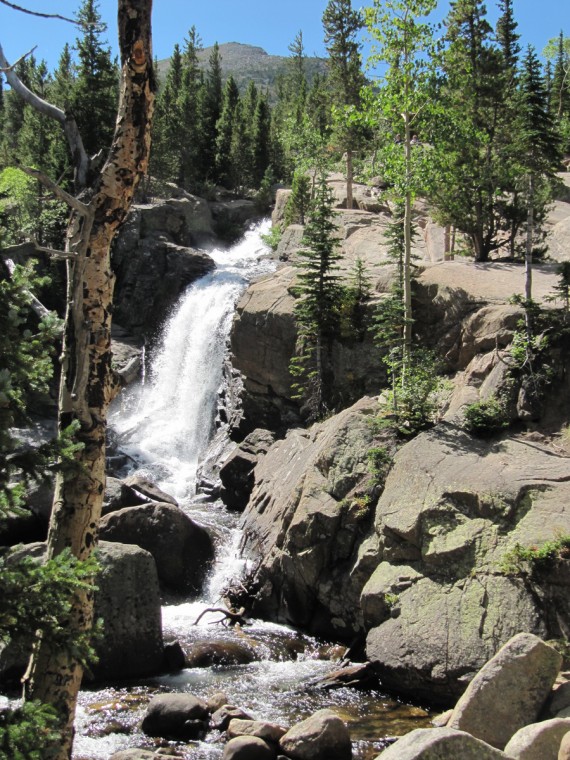On our second day in Rocky Mountain National Park, Mike and I traveled along Bear Lake Road to see Alberta Falls and Bear Lake. We weren’t planning on any grand hikes into the wilderness. Nevertheless we did appreciate that some areas were easily accessible with a little walking. This area of the park was busier than yesterday’s tour of Trail Ridge Road.
Longs Peak
We took a moment to view Longs Peak, named after Major Stephen H. Long, who led a U.S. Army topographic expedition to the region in 1820. As Major Long and his party of 22 explorers neared the Rocky Mountains, he wrote, “a high Peake was plainly to be distinguished towering above all the others as far as the sight extended.”
Bear Lake
Bear Lake rests beneath the sheer flanks of Hallett Peak and the Continental Divide. The lake was formed during the ice age by a glacier. Several trails start from the lake. The trail around Bear Lake offers magnificent views across the lake to Longs Peak and the other high mountains surrounding Glacier Gorge.
Hallett Peak is flanked by Flattop Mountain to the north and Otis Peak to the south. Just to its east lies Dream Lake. Non-climbers may reach the summit of Hallett Peak easily by following the Flattop Mountain Trail to its highpoint, then walking south along the ridgeline and ascending the peak over talus piles (rocks at the base of a slope). We didn’t ascent the peak but instead visited Alberta Falls.
Alberta Falls
This is a very enjoyable hike. The trail is well maintained and the scenery is beautiful. The Falls are only .6 mile with a rise of 160 feet from Glacier Gorge Junction. We connected with the trail from Bear Lake. Once we viewed the Falls we doubled back on ourselves and followed the sign for Glacier Gorge Junction. We went downhill to the shuttle bus stop. We then rode back to the Bear Lake parking lot to pick up our car.
In the afternoon we headed for Utah via Trail Ridge Road. We enjoyed our time at Rocky Mountain National Park.
Wilderness
In 2009, Congress protected 95 percent of the park under the 1964 Wilderness Act. Road corridors and adjacent visitor use areas are excluded. Wilderness designation protects forever the land’s wilderness character and natural conditions, opportunities for solitude and primitive recreation, and scientific, educational, and historical values. In wilderness, people can sense being a part of the whole community of life on Earth. Preserving wilderness shows restraint and humility, and benefits generations to come. (Roaming the Rockies, NPS)










Leave a Reply